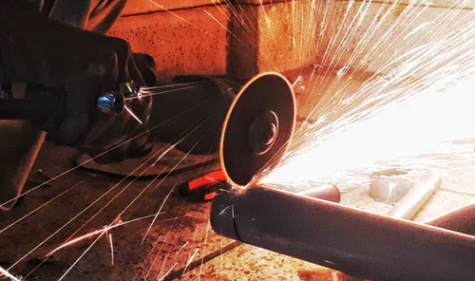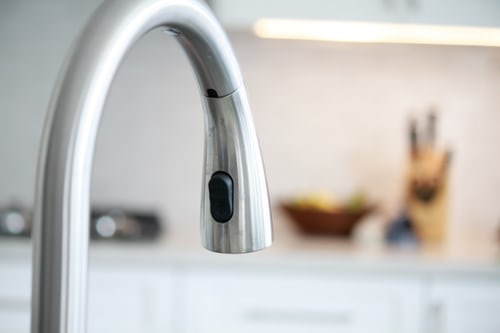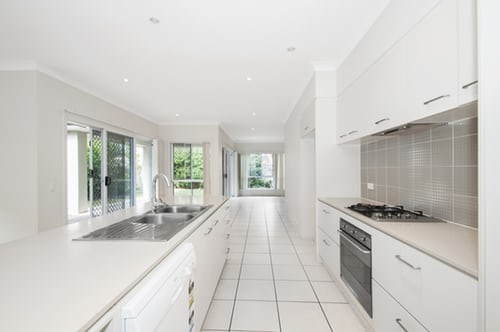Solutions to Common Plumbing Problems
by G. Brown
Affiliate Disclosure ...
THIS PAGE MAY CONTAIN AFFILIATE LINKS, MEANING WE RECEIVE A COMMISSION IF YOU DECIDE TO MAKE A PURCHASE VIA OUR LINKS, THERE IS NO COST TO YOU ... PLEASE READ OUR FULL DISCLOSURE FOR MORE INFO ... THANK YOU!
Posted on 02-03-2020 09:08 PM

Here we have summarised the solutions to some common plumbing problems. We hope you will find this plumbing information useful from plumbing materials to plumbing standards.
Common Plumbing Problems
Does your toilet gurgle when you flush it? And, is each flush a little slower than the last?
That ominous gurgling could be telling you it's time for a plumbing professional to check your drains and sewers. You could have a clog that could add up to overflow damage and a big mess in your home or business.
To keep things running smoothly and prevent problems, listen to your toilet if it's gurgling and running slow, because it's trying to tell you all is not well with your plumbing.
It's quite common for drain lines to clog up after years of use. Grease, soap scum, hair and food waste all cling to your drainpipes, and they can create slowdowns or blockages that can produce a mess or bring your business to a halt.
For a complete drain cleaning, call the professional plumbers to clean out your drains and get them running like new. Build-up in your drains can also damage your pipes, so it's important to call in a plumber for the most effective drain cleaning. You want your drain cleaning to use techniques and products that are safe and effective, no matter what type of plumbing your home has.
It used to be that plumbers had to dig up the sewer line to uncover the problem, making a mess of your yard. Now, expert plumbers can use a video camera to inspectyour sewer lines and discover just where the problem is located. Many things can block sewer lines, from tree roots and construction debris, to settling of the lines, which can cause them to become disjointed or be punctured.
Many things can block sewer lines, from tree roots and construction debris, to settling of the lines, which can cause them to become disjointed or be punctured.
Best Practice for Plumbing Installations
Professionals can guide you in acquiring the required paperwork for the project, buying the necessary materials, and handling any other aspect of plumbing repair.
Demonstrate good work habits and meet accepted safety standards. Use hand and power tools of the industry. Identify piping materials and install them using proper connections and methods.
Use and apply industry specific terms and technical data. Read and interpret blueprints, specifications, and codes as they apply.
Install, maintain, and repair plumbing systems and keep up with the new developments in the field. Apply basic knowledge and skills of electrical work to install, repair, maintain, and troubleshoot electrical controls used in plumbing.
Apply energy conservation measures to plumbing installations.
Choice of Plumbing Pipes and Materials
Knowing the type of plumbing in a home is important for planning based on how long the system will last. The home inspection report obtained with a purchased home can provide information on their composition. A plumber can also do an inspection of the pipes as well.
In the 1970s plumbing trends moved away from clay, copper, and cast iron pipes to plastic. Plastic plumbing pipes made from pvc or cpvc (polyvinyl chloride and chlorinated polyvinyl chloride) are strong, resilient, and cost-effective.
Many older homes still have galvanized steel or copper piping. While durable, over time, both types of piping can develop corrosion.
Remember what we said about hot water pipes and abrasion? the same holds true for hot water lines and corrosion. Due to the reaction between hot water and the pipe materials, pipes can corrode from the outside.
We also mentioned cold water pipes can corrode too. Instead of corroding from the outside, cold water pipes corrode from inside the pipe. Time also equals years of stress and pressure on pipes. This puts them in the higher risk category for slab leaks.
Avoiding Frost Damage
The pipes you need to be most concerned about are those that have the most exposure to the cold. These include outdoor hose taps, swimming pool supply lines, underground sprinkler systems, and plumbing in unheated basements, crawl spaces, attics and garages.
Pipes that run against exterior walls are also at risk. What to do when it's cold outside, you should periodically check all the faucets in your home. If it doesn't work or water is just a trickle you may have frozen water in your pipes. Attempt to locate the frozen area by looking in the area most likely to freeze, i. e. the coldest.
Use a heat lamp, space heater, hair dryer or electrical heat pad to begin to thaw out the pipes. Remember to keep the tap open as you work. That's because running water will help melt the ice faster.
How to Thaw Out Frozen Plumbing
Apply heat until full water pressure is restored, then consider going to your neighborhood hardware store to purchase insulation for the areas of the pipe that froze (to help prevent it from happening again).
Do not use any sort of blow torch or open flame to warm the pipes. I can not stress this enough, so let me say it again. Do not use an open flame. First off, an open flame is a fire hazard and if you are working in a confined area there is a threat of carbon monoxide poisoning.
Every year there is a story in the news of some person burning down their home or suffocating themselves to death while working on frozen pipes.
What to do to Investigate Suddenly Low Water Pressure
If you suddenly find that your water pressure has dropped through the whole house then an underground leak can be the culprit.
A single appliance, such as a toilet, suddenly dropping pressure still indicates a problem of course. In that case, you should see if you can trace out the leak through the water supply to the problematic tap, toilet, or shower. On the other hand, if the pressure goes down through the whole house at once then you’re most likely looking at a broken water main.
Depending on the drop in pressure you may be dealing with a fracture or even a completely burst pipe and it’s time to call in a professional.
Use of Tubing for Plumbing Systems
Tubing is a flexible hose or pipe used in plumbing, irrigation, and other industries. Tubing may be made of polyvinyl chloride (pvc), polyethylene (pe), copper, or other material. Tubing is usually supplied in rolls compared to rigid pipe which is sold in straight lengths called joints or sticks.
Tubing is usually measured by its outside diameter, while pipe is usually measured by its inside diameter. Pex tubing is used to distribute water in pex plumbing, radiant heat, and other hydronic heating systems.
Plumbing Service Types
 There are also several different types plumbers. There are basic technicians, flat-price plumbing service, by the hour, commercial and heavy duty plumbing machinery, and others.
There are also several different types plumbers. There are basic technicians, flat-price plumbing service, by the hour, commercial and heavy duty plumbing machinery, and others.
Plumbing products are manufactured by many companies around the world. You can find sinks made by US companies, china, mexico, italy and more.
Manyof these manufacturers make great plumbing fixtures, so it really comes down to which style you are looking for and that will fit your home that determines which toilet, bathtub or others you purchase.
Flexible Pipe for Plumbing Applications
Pex (or crosslinked polyethylene) is part of a water supply piping system that has several advantages over metal pipe (copper, iron, lead) or rigid plastic pipe (pvc, cpvc, abs) systems.
The hdpe is melted and continuously extruded into tube. The crosslinking of the hdpe is accomplished in one of three different pex plumbing has been in use in europe since about 1970, and was introduced in the U. S. in around 1980.
The use of pex has been increasing ever since, replacing copper pipe in many applications, especially radiant heating systems installed in the slab under floors or walkways. Interest in pex for hot and cold water plumbing has increased recently in the united states.
The Advantages of Pex Pipes
It is flexible, resistant to scale and chlorine, doesn't corrode or develop pinholes, is faster to install than metal or rigid plastic, and has fewer connections and fittings. Pex tubing is made from crosslinked hdpe (high density polyethylene) polymer.
It’s popular for residential projects. It’s a little higher in price, but the minimal maintenance and quick installation required may be worth paying a little more. Pex piping is one of the best plumbing pipes for water in buildings.
It’s a leak-free pipe that makes it more popular than copper indoors. A caveat, when used outdoors, it’s plastic layer is vulnerable to UV ray damage.
Double check the pipe route and verify all pipes and fittings have room. Disconnect the electricity to the water heater. If using pex or copper pipe and fittings, remove all debris and corrosion before making the connections. Many homeowners choose to use push-on plumbing fittings when working with cpvc, pex or copper pipe.
A push-on plumbing fitting does not require a torch and solder, glue and primer, or rings and a clamp tool. The arrow on the top of the water purifier points toward the discharge port.
National Plumbing Standards
Plumbers comply with all relevant plumbing codes. These are a set of standards put in place by the government. The code is updated each year, so licensed plumbers need to maintain continuing education throughout their career.
Installation of the plumbing fixtures involves plumbing design as the primary step which comprises the implementation of plumbing fixtures during the planning stage of a house or any building.
Proper planning is essential to design for any kind of plumbing system. While you are constructing home or any residential or commercial building, proper planning methodology regarding all the works related to plumbing, electrical work etc are essential.
One of the main advantage of designing a plumbing system before the installation is that we can ensure quality and safety of the plumbing system.
 Imagine if the pipes were to be installed without any advance planning. And, if we take a simple case of a bathroom. What happens if there is a leak in the water supply or a burst pipe which leads to sudden flow of water. Unless plumbing is done to good standards and stop cocks are placed near or preferably under the kitchen sink, you may not know how to stop the flow of water.
Imagine if the pipes were to be installed without any advance planning. And, if we take a simple case of a bathroom. What happens if there is a leak in the water supply or a burst pipe which leads to sudden flow of water. Unless plumbing is done to good standards and stop cocks are placed near or preferably under the kitchen sink, you may not know how to stop the flow of water.
To avoid those situations most of the plumbing industries provide a high quality plumbing design services with the schematic representation of the workflow for plumbing system which meets the international standards at low costs.
Plumbers will carry out the installation of the pipes in accordance with the plumbing design and also they are experts in preparing the lay outs of designing plumbing fixtures, detailed for plumbing coordination , piping construction etc. Every plumbing system follows some guidelines for designing and pictures the structural drawings which also comprise a utility plan.
National Plumber's Day
April 25th each year is national plumbers day.
Conclusion - Solutions to Common Plumbing Problems
Plumbing is one of the higher paying jobs in the construction field.
Plumbers are responsible for 2 basic principles: providing potable water (safe to drink) and keeping it separated from waste, while properly disposing of such waste via a system of pipes.
Safety is always the first consideration for a plumber. If a working environment is not safe, a plumber wont work there until it is.
Plumbers are frequently exposed to corrosive materials, dangerous chemicals, noxious gases, and bacteria-infested environments. The plumbing field is highly regulated.

